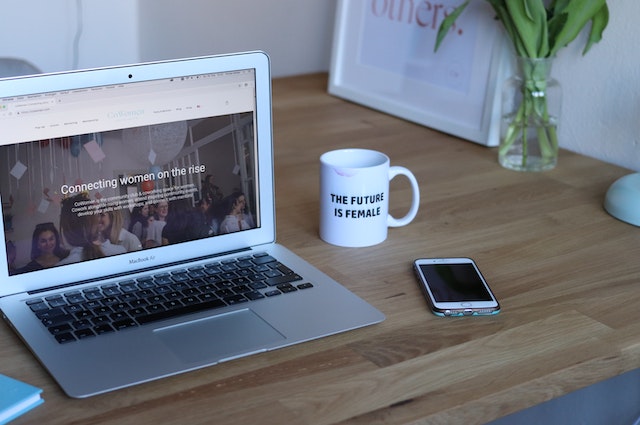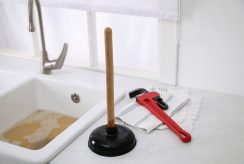As information becomes more readily available and products become more easily accessible, it can be challenging for brands to differentiate themselves as purchasing options for customers. That is why sales funnel optimization is crucial to attracting and keeping customers.
In this article, we’ll share five effective techniques for optimizing your sales funnel to enhance marketing strategy and ultimately boost sales.
Identify Your Target Audience
A sales funnel is an analogy for how your business keeps its pipeline moving smoothly, while organizing marketing efforts and controlling revenue growth.
Before beginning to construct an effective sales funnel, it’s essential that you gain an in-depth knowledge of your target audience’s interests, needs, and goals. By doing so, it will allow you to craft high-quality lead magnets which draw them in at the front end of the sales process and increase engagement rates.
Once you’ve captured your audience’s interest, it’s important to direct them somewhere specific. A website could feature an attractive landing page offering free resources such as reports or eBooks in exchange for contact info – this will help nurture leads further along in their sales process and reduce any clogged steps in your sales process. A good CRM tool which automatically collects and analyses customer data would certainly come in handy at this stage!
Identify Your Unique Selling Proposition

A sales funnel is a process designed to move customers from prospective leads into paying customers, helping ensure your reps focus on quality deals rather than simply closing as many as they can quickly in order to meet their quota.
Attracting and setting yourself apart from competitors are crucial in order to attract your ideal customer and foster repeat business.
Define your sales funnel stages so you can utilize strategies such as two-step tripwire to hook consumers. By offering them something at an inexpensive cost first, they become familiar with your brand and more likely to trust that investing in more costly offerings from you will be worthwhile – which makes conversion easier at the bottom of your sales funnel.
Create Your Offer
At the Interest stage, you should provide them with an offer such as a checklist to get back into shape in exchange for their email address (capture leads). Once signed up, begin sending them emails with valuable information like links to blog posts about fitness or discounts on products/services offered.
As your prospects enter the Desire stage, they may need more tailored content specific to their industry – this might involve testimonials as social proof or case studies related to your product or service.
Once prospects reach the bottom of your sales funnel, you can gradually move them toward making purchases through targeted follow-up emails and offers such as discounts on first orders, free shipping or referral bonuses. Doing this builds trust between yourself and the prospect, increasing chances of conversion.
Create Your Landing Page
Designing a sales pipeline requires an engaging landing page. Your landing page should provide key details about your product such as its features and benefits, price options, payment methods, shipping methods, as well as customer reviews with star ratings for social proof.
Landing pages must clearly direct visitors towards taking the next step, whether that’s signing up for your mailing list, downloading an e-book for free download, or making a purchase. To optimize conversion rates and ensure marketing dollars are spent wisely, try A/B testing your landing page copy, layouts, images, CTA’s etc to find what works for your audience – then track results to identify leaks in your sales funnel that need fixing – this way your conversion rate increases as do marketing dollars spent wisely!
Create Your Emails
An efficient sales funnel can make all the difference for businesses, helping reduce lost sales, improve conversion rates and drive increased revenue.
Awareness stage of a sales funnel refers to where potential customers first become aware of your product or service. At this point, they may not yet be ready to purchase, so it’s crucial that helpful content and resources are shared during this phase.
At this stage, prospects become more convinced they need your product or service. At this stage, creating targeted emails that address directly the needs of your audience are essential in building trust with subscribers and establishing credibility with new subscribers. Case studies, whitepapers and other valuable content sharing may be effective ways to do this – this will establish credibility and build rapport.
Create Your Confirmation Page
Filtering out unqualified leads is crucial. An efficient sales funnel can help you focus on those most likely to become clients while saving you time by eliminating efforts spent prospecting those that might not fit.
At the top of your sales funnel lies your buyer, who may discover you through social media posts or blog articles, search engines, online ads, brochure downloads or word-of-mouth recommendations. In this stage, your goal should be to organize them based on their lead source and create an email sequence tailored to their stage in your sales cycle.
An effective sales process ensures your messages are timely and personalized, creating the difference between customers who say no and ones who buy your products/services. To be effective at this, it is crucial that you have an in-depth knowledge of the purchasing cycle as well as ways to effectively manage it.
Create Your Sales Page
Sales pages serve as the final step in your funnel to convince qualified leads to purchase your product or service. The most successful sales pages provide clear instructions to buyers as they make their decision and next steps for purchasing decisions.
If you offer courses, include an easy call-to-action to enroll directly on the sales page. Making use of brightly-colored CTAs will ensure it stands out and increases click-through rates.
Longer sales pages often need additional content to provide information and answer common inquiries from potential customers, which is where an FAQ section comes in handy.
Finally, always provide your product with a clear refund policy and social proof. This will reduce customer complaints while making your business seem trustworthy; some countries even require this information in order to sell its product!
Create Your Upsell/Downsell Page
Upselling and downselling can be powerful tools for increasing the value of your sales funnel. Offering your customer related products that complement what they purchased can increase customer retention; creating repeat buyers.
It’s essential that upsells are relevant to customers’ needs and wants; overselling will lead to customer churn. By engaging in too much upselling activity, you risk alienating potential buyers while damaging your brand image.
Use the ThriveCart Upsell/Downsell Page to integrate post purchase offers directly into your checkout. To edit an upsell or downsell page, use Oxygen builder to personalize an offer before adding as a redirect link from its own product to its main product and click save when finished.
Create Your Thank You Page

When using a sales funnel, it’s essential that customers are thanked for taking the time to fill out your lead form. Doing this also gives you an opportunity to move them along their journey by signing them up for trials if they are still in awareness stage, or asking for referrals if they have advanced further along their journey.
HubSpot provides an example of using your thank you page to ask for referrals. They do this by showing a bold image of their product above the fold and maintaining interest below by including a visual chart that tracks every person’s progress toward earning their referral bonus.
They also feature their free plans as a way of encouraging customers to subscribe. This is an effective way of upselling and increasing conversions! Plus, it can easily be implemented with just some slight wording adjustments!
Create Your Follow-Up Page
Effective sales funnel management means identifying leaks in your conversion process and optimizing them, using tools and strategies that will convert prospects faster into customers and generate greater revenues than without one in place.
At the top of your sales funnel lies awareness, where potential buyers first become acquainted with your brand and solutions you offer. Here, tracking, qualifying, and prioritizing leads begins.
Once a prospect reaches the interest stage and shares their contact info through your lead magnet, you’re ready to nurture them into becoming customers. Unfortunately, many sales funnels run afoul here: when marketing and sales teams don’t work in concert together to produce quality leads for sales teams to follow up on, this often results in “leakage.”





